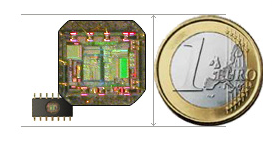 Microcontroller Break Categories
Microcontroller Break Categories
Microcontroller Break Categories
We can distinguish five major microcontroller break categories:
Microprobing techniques can be used to access the chip surface directly, so we can observe, manipulate, and interfere with the integrated circuit.
Reverse engineering is used to understand the inner structure of semiconductor chip and learn or emulate its functionality. It requires the use of the same technology available to semiconductor manufacturers and gives similar capabilities to the attacker.
Software microcontroller breaks use the normal communication interface of the processor and exploit security vulnerabilities found in the protocols, cryptographic algorithms, or their implementation.
Eavesdropping techniques allows the microcontroller breaker to monitor, with high time resolution, the analog characteristics of supply and interface connections and any electromagnetic radiation by the processor during normal operation.
Fault generation techniques use abnormal environmental conditions to generate malfunctions in the processor that provide additional access.
All microprobing and reverse engineering techniques are invasive microcontroller breaks. They require hours or weeks in specialised laboratory and in the process they destroy the packaging.
The other three are non-invasive microcontroller breaks. The microcontroller breaked device is not physically harmed during these microcontroller breaks.
The last microcontroller break category could also be semi-invasive. It means that the access to the chip’s die is required but the microcontroller break is not penetrative and the fault is generated with intensive light pulse, radiation, local heating or other means.
